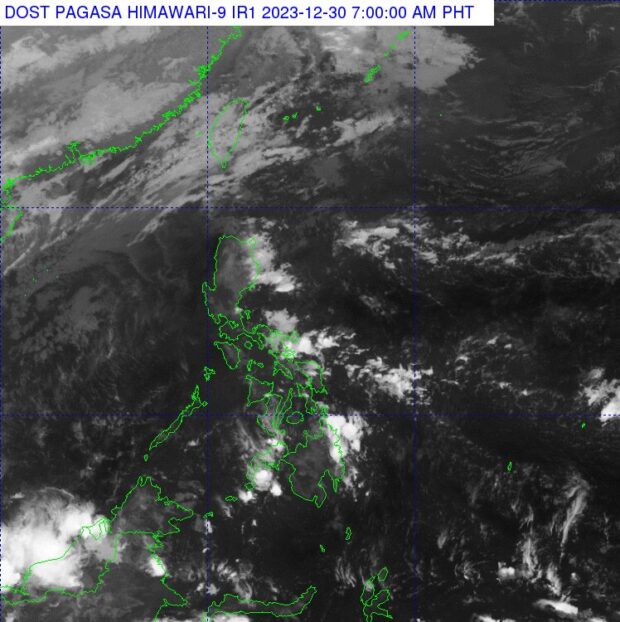
The Philippine Atmospheric, Geophysical and Astronomical Services Administration says on Saturday that it is not monitoring any low pressure area that may develop into a typhoon on New Year’s Eve. It added that the first few days of 2024 may also be typhoon-free. Image from DOST / Pagasa
MANILA, Philippines —The Philippine Atmospheric, Geophysical, and Astronomical Services Administration (Pagasa) on Saturday forecast no typhoons for New Year’s Eve and the first few days of 2024.
“Wala pa rin tayong binabantayang low pressure area na posibleng maging bagyo na maaaring makaapekto sa ating bansa bago matapos ang taong ito hanggang sa mga unang araw ng taong 2024,” said state weather specialist Daniel James Villamil.
(We still do not monitor a low pressure area that could potentially become a typhoon that could affect our country before the end of this year until the first days of 2024.)
READ: Ready for the chill? Pagasa says ‘amihan’ begins
However, the northeast monsoon, locally known as amihan, will still bring cloudy skies with rains over Batanes and Babuyan Islands throughout the day.
Pagasa said that the same weather system will bring partly cloudy to cloudy skies with isolated light rains in the Ilocos Region, Cordillera Administrative Region, and the rest of Cagayan Valley.
READ: Amihan, easterlies to bring rain, overcast skies in most parts of PH
Meanwhile, Metro Manila and the rest of the country may expect generally good weather with chances of slightly cloudy to cloudy skies with isolated rain showers or thunderstorms caused by easterlies and localized thunderstorms.
The state weather bureau said that no gale warning alert is raised in any part of the country’s seaboards.